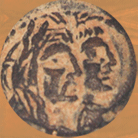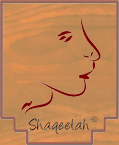









Shaqilat
Shaqilat is a Nabataean queen, the second wife of King Aretas IV, whose reign marked the apogee of military and cultural prosperity. Therefore, it is called the Golden Age of the Nabataeans. After the death of his first wife, Khaldo or Khalidah, whom he married in 8/9 B.C. before he became a king, it is believed that in 15 A. D. he married Shaqilat, who delivered Hagru or Hajir, Malik, Jameelah and Shaqilat II. That Shaqilat was called "the Sister of the King" does not likely indicate kinship, but it emphasizes the role of the Queen and her proximity to the king. This was traditionally embraced by the Nabataeans without indicating any sense of real brotherhood kinship.
During the reign of King Aretas IV and Shaqilat, the trades expanded to distant areas in the ancient world; the Nabataean merchants reached Roman Ostia port and Italian Puteoli. Meanwhile, industry, commerce and civilization to a great extent flourished in a sense it is considered as one of the most prosperous, historical periods in Ancient East. At this stage, many of the features, interfaces, and public buildings were established in Petra, Mada'in Salih and other Nabatean cities, including the amphitheatre, Qasr el-Bint (the temple of Dushares), Greco-Roman facades, carved out of the rock and, above all,
Al Khazneh (the Treasury) -- the most magnificent sites of Petra. In addition, the biography of Queen Shaqilat and her husband Aretas IV is rife with examples of a uniquely advanced vision of the keenness of the ruling class on the values of progress, prosperity and women's status in ancient Nabataean community.
By the same token, the pictures of Aretas IV and Shaqilat on some Nabataean coins offer expressive examples and models of the Nabataean civilization in terms of the culture of clothing. One piece of Aretas IV coins shows that he wears a shield and a coat of buttons tied around the neck, resembling a scarf (koofiyah), fluttering in the wind. He seems a soldier, standing in the foreground, looking forward, holding a spear with his right hand, and hanging from his left side his sword in its sheath. However, Queen Shaqilat looks like a dreamy woman, lifting her head to the top, and her curly hair hangs to the edges of her shoulders.
